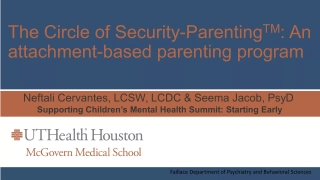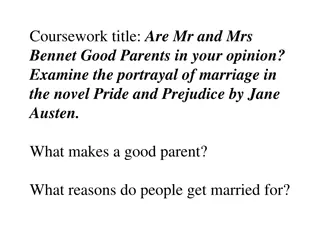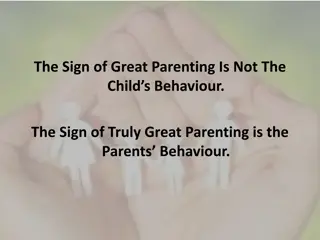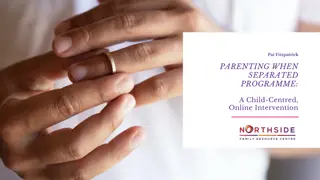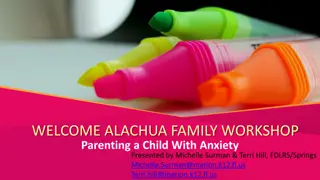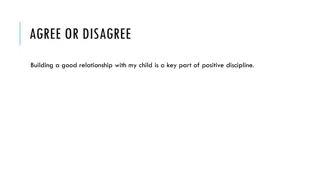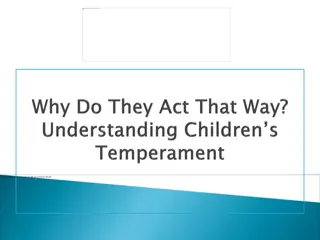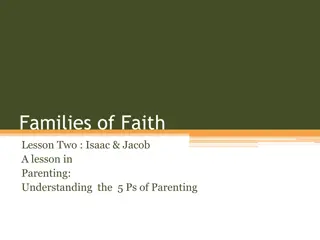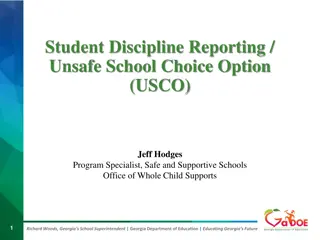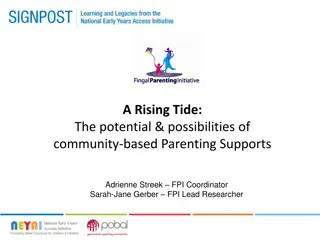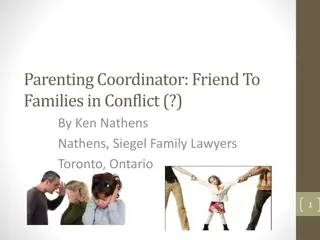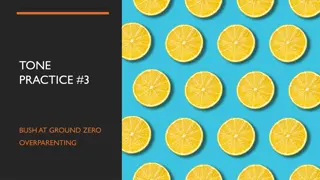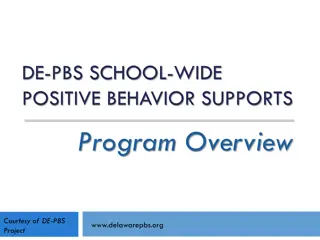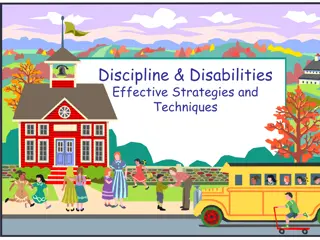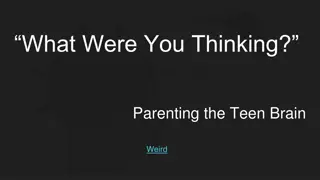Understanding Positive Discipline Techniques for Effective Parenting
Children have the right to a nurturing environment free from violence and shame. Negative discipline methods like spanking and yelling can have long-lasting negative impacts on a child's development. By understanding the reasons behind negative discipline practices and exploring alternative positive approaches, parents can foster a healthier, more respectful relationship with their children.
Download Presentation

Please find below an Image/Link to download the presentation.
The content on the website is provided AS IS for your information and personal use only. It may not be sold, licensed, or shared on other websites without obtaining consent from the author. Download presentation by click this link. If you encounter any issues during the download, it is possible that the publisher has removed the file from their server.
E N D
Presentation Transcript
Alternatives To Negative forms of Discipline Family Development Resources, Inc. 1
About Negative Discipline Children have the right to grow up in an environment free from violence, disrespect, and hurt. The greatest limitation of spanking, yelling, and shaming is the negative impact on children s psychological development. 2
About Negative Discipline The more frequently that this type of discipline occurs, and the greater severity, the greater the negative impact. Violence breeds violence. Children learn how to be violent, and a large part of the learning occurs in the home. Yelling makes children more aggressive, physically and verbally. Yelling in general, no matter what the context, is an expression of anger. It scares children and makes them feel insecure. 3
Understanding Why Parents Use This Type of Discipline Personal History Many people raise their children the way they were raised. Adults who were spanked or yelled at as children tend to repeat those same patterns in raising their children. Act of Love Some parents feel that hitting children is an act of love born out of concern for their child s well-being. Statements like If I didn t love you, I wouldn t be doing this, or This hurts me more than it hurts you, send confusing messages to children. 4
Understanding Why To Teach Right from Wrong The reality is that spanking communicates to children that they did something wrong, and that they are bad people. Hitting never teaches children what to do or what is the right thing to do. It only teaches children what is not acceptable. As Punishment For many parents, hitting is the only way they know to punish children for misbehaving. Parents are afraid if they don t spank, then their children will be out of control. 5
Understanding Why When Angry or Stressed Out Parents who are stressed out, angry and who lose control easily are at a higher risk for hurting their children than parents who can control their anger. The key to controlling one s anger is to not let it get out of control. Find other ways to release angry energy. To Teach Respect or Toughen Them Up Parents demand that their children treat them with respect yet use violence to enforce their demands. Children learn that violence is a way of getting others to do what you want them to do. 6
Understanding Why Religion Spare the rod, spoil the child is the most misquoted and misunderstood phrase in religious literature. Members of the clergy believe that the rod represents guidance. Children need guidance, not violence. Culture Parents of different cultures may believe hitting or other negative styles of discipline is an important part of their culture. 7
Why Is Negative Discipline Detrimental to Children? Parents become people children fear and avoid, rather than someone in whom they can confide. Physical or verbal abuse given out of love can teach children that people who love you should hurt you. When they grow up, they may get involved in unhealthy relationships. Many people have difficulty getting close to others because of these double messages. 8
Why Is Negative Discipline Detrimental to Children? When you hit a child s body, or yell and shame them, you are telling the child he or she is bad, no good, unacceptable, inappropriate, etc. When you use positive methods of discipline, you are telling the child what he or she did was bad or wrong, but that he or she is still a good person. The biggest problem with telling a child that they deserve to be hurt is that children learn that being victimized is normal or appropriate. This is a philosophy that can destroy relationships and lives later in life. 9
Parents Personal Struggle to Change It is difficult to break a habit--good or bad. Spanking a child is a parenting habit that seems like the right thing to do, even though we may not necessarily feel better about what we did afterwards. They may view what they are doing as okay because it is being done with love. They may view spanking as different from hitting a child. 10
Alternatives to Negative Punishments Loss of Privilege A privilege is a right granted by a parent. Privileges can be things like watching TV, gaming, or riding a bike. Grounding When a child repeatedly misbehaves, such as, repeatedly leaving the yard without permission, an appropriate punishment is being grounded to the yard or house. Grounding should be for a reasonable period of time (one or two days, never more than a week). 11
Alternatives to Negative Punishments Disappointment Parental disappointment is a simple statement which expresses the parent s disappointment in a behavior the child has chosen to perform. If the behavior occurs again, a parent may use time out or take away a privilege. Restitution Restitution means that there is a payback or logical consequence for a specific misbehavior. The goal of restitution is to make good of a wrong. 12
Alternatives to Negative Punishments Ignoring Ignoring is a way parents communicate their disapproval of certain behaviors by deliberately not paying attention to it. Ignoring is appropriate for annoying, but harmless, behavior. Parents should praise behaviors they want to increase and ignore the behaviors they want to decrease. Parents should NEVER ignore behaviors that: Cause or risk harm to the child or others Cause damage to property 13
Alternatives to Negative Punishments Verbal and Physical Redirection Verbal redirection tells children what is and isn t okay. Physical redirection removes children from dangerous activities and substitutes more appropriate activities. Verbal and physical redirection work best when used together. Time In Time in is a temporary opportunity for the child to be removed from the situation and to reset with or near a loving adult. This is a time for them to learn to regulate and identify their emotions. 14
In Conclusion Spanking, screaming, shaming, or other negative forms of discipline are not effective and have many harmful consequences. Techniques such as grounding, ignoring, redirection, and time in are much more effective. 15


